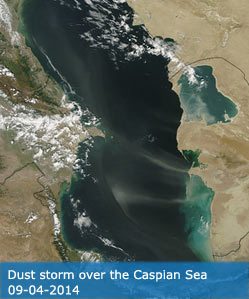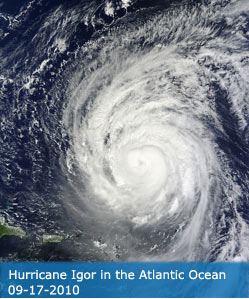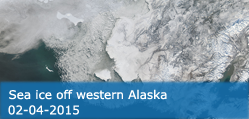Science Team
Publications
Loveridge, JR; Di Girolamo, L (2024). Do Subsampling Strategies Reduce the Confounding Effect of Errors in Bispectral Retrievals on Estimates of Aerosol Cloud Interactions?. JOURNAL OF GEOPHYSICAL RESEARCH-ATMOSPHERES, 129(19), e2023JD040189.
Abstract
Bi-spectral retrievals of droplet effective radius and cloud optical depth are widely utilized to estimate aerosol cloud interactions (ACI) in warm clouds in the marine boundary layer. Here, we assess the effect of retrieval errors due to the neglect of 3D radiative transfer during the retrieval process on this analysis of ACI. We use an ensemble of stochastically-modeled cloud fields and 3D radiative transfer simulations to study the retrieval errors at a solar zenith angle of 30 degrees. Simulated retrieval biases in droplet number concentration (Nd) for all three MODIS channels vary systematically from +35% to -80% as cloud heterogeneity increases. Pixel-level errors can be much larger. Commonly utilized subsampling strategies do not reduce the systematic variation in retrieval error. Negative error correlations between optical depth and droplet effective radius produce spuriously negative slopes between the logarithm of liquid water path and Nd (-1.0 to -0.3). Pixels at the center of (8 km)2 patches that are not overcast have a relative bias in Nd of -50%. The relative frequency of these biased pixels varies linearly with the clear fraction in MODIS data and form the basis for a simple parameterization of Nd bias that varies with cloud fraction (CF). Using this parameterization, synthetic data experiments indicate that estimates of the first indirect effect in the tropical ocean can be overestimated by up to 30%, and the effect of aerosol on CF is overestimated by 50%, due to neglecting the correlation between retrieval errors and cloud microphysics. Humans produce pollution which takes the form of small particles in the air called aerosols. The emission of these aerosol particles is predicted to increase the amount of the Sun's light that is reflected by clouds, and thereby offset some amount of global warming. We need measurements to understand whether this effect is occurring over the Earth to a significant degree. Satellites that observe the Earth are one of the main ways in which we can detect the changes of cloud reflectivity due to anthropogenic pollution. In this work, we showed that the most widely used algorithm for interpreting changes in cloud reflectivity misinterprets the changes in reflectivity due to variations in cloud spatial structure (e.g., cloud top bumpiness) as being caused only by variations in the sizes of droplets. This limitation lowers our confidence in our observations of the effects of human pollution on the Earth's climate and motivates the development of new instruments and techniques that do account for changes in cloud spatial structure, which will further our understanding of the role of human pollution on the Earth's climate. Popular techniques for selecting bi-spectral cloud retrievals with low error do not reduce systematic bias caused by cloud heterogeneity Correlations between cloud heterogeneity and microphysics bias estimates of first indirect effect and cloud fraction adjustment Anticorrelated errors in cloud optical depth and droplet effective radius bias estimates of liquid water path adjustments
DOI:
10.1029/2023JD040189
ISSN:
2169-897X




